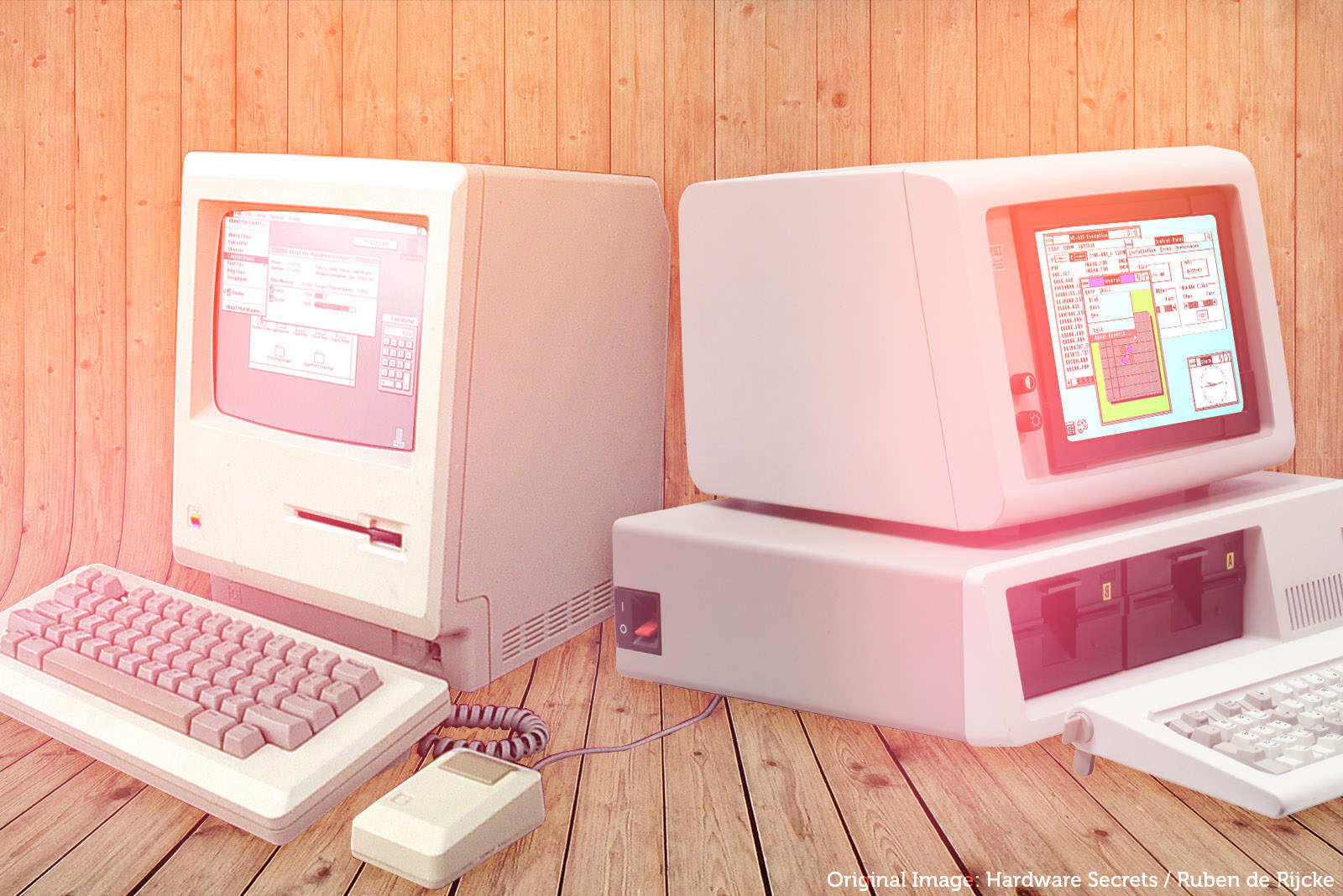 July 25, 1989: Apple suffers a major setback in its copyright-infringement lawsuit against Microsoft for allegedly stealing the Mac’s “look and feel” to create Windows.
July 25, 1989: Apple suffers a major setback in its copyright-infringement lawsuit against Microsoft for allegedly stealing the Mac’s “look and feel” to create Windows.
Apple sued Microsoft on 189 counts of copyright infringement relating to Windows 2.0.3. The judge overseeing the case throws out 179 of them. This paves the way for Microsoft’s dominance over Apple in the coming decade.
Microsoft deal was terrible for Apple
The 1989 court case resulted from a disagreement dating back to the original Mac project. Because Microsoft was developing Mac software that Apple hoped would make the computer a contender in the corporate world, Microsoft’s co-founder Bill Gates and Word/Excel mastermind Charles Simonyi were among the first outsiders to get a Mac prototype.
After the launch of the Mac in 1984, Gates wrote to Apple CEO John Sculley. Gates suggested that Apple license the Macintosh operating system to outside manufacturers.
The strategy theoretically would help establish the Mac as the standard interface for personal computing. However, Apple exec Jean-Louis Gassée rejected the June 25, 1985, proposal. (Gassée had taken over running the Mac division from Steve Jobs.)
Windows infuriates Apple leaders
Gates decided to capitalize on what he saw as a great business opportunity to create a mass-market operating system. He debuted Microsoft’s operating system, Windows, on November 15, 1985. Sculley grew furious when he saw it, even though Windows 1.0 didn’t compare well to Mac OS.
For example, although Microsoft’s operating system featured onscreen windows, they could not overlap one another. But Windows did come packaged with built-in apps Write and Paint, which seemed oddly reminiscent of MacWrite and MacPaint.
Still, Microsoft programs accounted for two-thirds of all Mac software sales. Therefore, it was in nobody’s interest to end the partnership when Apple’s new computer wasn’t flying off the shelves.
Because Microsoft had already begun developing Windows before the Macintosh was shown to Gates, and both systems had licensed technology from Xerox PARC (which invented the graphical user interface), an agreement between Microsoft and Apple was arranged.
Sculley and Gates signed a deal on Nov. 21, 1985, that licensed the Mac’s “visual displays” to Microsoft. Microsoft agreed to continue developing software for Mac (and to give Apple a two-year exclusivity window with Excel).
Apple vs. Microsoft: The start of a rivalry
All remained well and good until Windows 2.0 arrived a few years later, looking far closer to the Macintosh interface. Apple promptly filed a copyright-violation lawsuit on March 17, 1988. The suit identified 189 different elements that Apple said Microsoft used illegally.
Things looked bad for Microsoft until Judge William Schwarzer’s historic ruling on this day in 1989. He said the existing license between Apple and Microsoft covered many of Windows’ new interface elements. Those not covered simply were not copyrightable, Schwarzer ruled.
The decision soured relations between Apple and Microsoft. It established a long-running rivalry between the two companies, and set the legal basis for Windows’ impending ubiquity during the 1990s.
In other words, this was a crucially important day in Apple’s history … just not necessarily one Apple fans want to remember!



